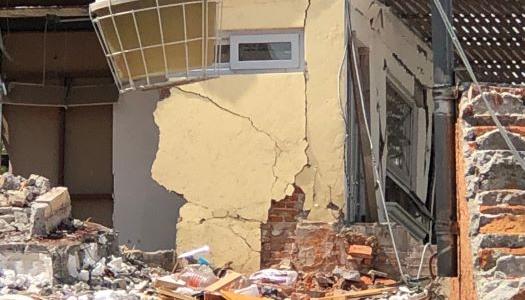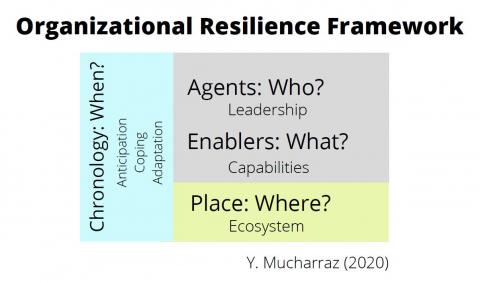How Do Resilient Organizations Respond To Catastrophes?

Recovering from Disaster
In times of disaster, we can’t go back to what was, but we can move forward with hope and thrive.
Recently, Doctor of Social Sciences (DocSci) candidate Yvette Mucharraz y Cano, (Doctoral Supervisor: Kathy Bishop and Committee Members: Carlos Gomez and Bev McPhee ) was featured in a Harvard Business Review (HBR) webinar entitled: How Resilient Organizations Respond to Catastrophes based on her RRU research. Yvette is also a professor at Ipade Business School in Mexico and director of the Research Center for Women in Senior Management. On September 30th, 2020, more than 3500 individuals registered for the HBR webinar, with over 1000 participants (higher than the usual 400) attending.
Stages of Dealing with Disaster
Locating her research in two Mexican earthquakes (1985, 2017) and extending it to the current pandemic, Yvette spoke to why business people need to know about catastrophes, both locally and on a global stage and offered three key stages for dealing with catastrophe: anticipation, coping, and adaption.
1. Anticipation
Making the case that disasters will continue to happen, Yvette noted that in anticipation of catastrophes, the first step is awareness of crisis triggers. She provided evidence from the UN report 2020 that disasters, like COVID deepen pre-existing inequities and spoke to consequences like increased mental health issues and violence affecting most marginalized populations such as children and women.
2. Coping
To cope with disasters business leaders need to consider both business continuity and community preservation. Employers can reduce inequalities.

3. Adapting
Abramson et al. (2014) social resilience model, Yvette spoke to a model of organizational resilience to address economic capital, social capital, human capital, political capital, as well as added three more capitals: technological, Intellectual (referring to knowledge and how to preserve for future generations in organizations), and natural (which is the interaction between the organization and natural environment). Furthermore, she developed a model for resilience that takes into account agents (leadership); enablers (capabilities); place (ecosystem); and chronology (timing). For each aspect she offers resilient actions.
The Importance of Emergent Leadership
Considering leadership, Yvette noted that emergent leadership is also important. Emergent leadership happens, when in the middle of a crisis, anyone in the organization takes a leadership role. This is especially important in cultures where a high power differential and a hierarchy of worth exists. In these times of crises, anyone beyond their position in the hierarchy can become a leader. Emergent leaders who are enabled to act comes within organizations that promote empowerment on a regular basis, and a humanized view exists that acknowledges the contribution of every individual, despite any personal, hierarchical, or functional circumstance.
More details can be found in her HBR article: How Businesses Can Brace for Catastrophe. This article has also been selected to be published in an Insights book that will be released by HBR under the topic of Climate Change.
References
Abramson, D. M., Grattan, L. M., Mayer, B., Colten, C. E., Arosemena, F. A., Bedimo-Rung, A., & Lichtveld, M. (2014). The Resilience Activation Framework: A conceptual model of how access to social resources promotes adaptation and rapid recovery in post-disaster settings. Journal of Behavioral Health Services and Research, 42(1), 42–57.